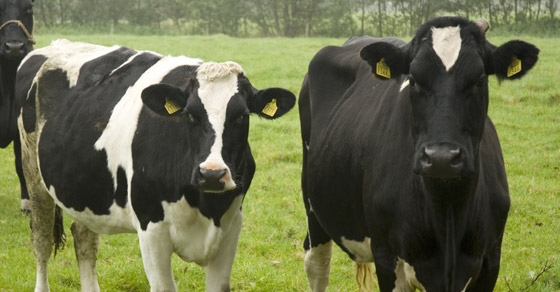Phosphates play a key role in maintaining food security and overall life on Earth; the phosphorus available in phosphates is a necessary nutrient for many biological processes that occur in humans, plants, and animals. Without it, crops would not produce, animals could not survive, and life on Earth would not be possible.
As finite resources of phosphate rock dwindle, efficient use of this life-giving nutrient will become increasingly important. Current research is focused on the recycling of phosphorus from waste streams, a concept that is expected to be the cornerstone of maintaining food security for a growing global population.
As a key supplier of phosphates processing equipment, process development testing, and parts and service support, FEECO continues to work with clients to improve process and product efficiency, as well as develop the phosphorus products that will feed tomorrow.
Why Recycle Phosphorus?
Mineralogical phosphate reserves are a finite and irreplaceable resource. As economically accessible reserves begin to diminish, scientists worldwide are concerned about food security and the survival of a world without this crucial mineral. This worry is compounded by the fact that demand for phosphate is constantly on the rise, as the world tries to feed a growing population.
In 2008, a brief 800% spike in phosphate prices was enough to cause riots and suicides in areas where access to fertilizer became unavailable.
Simultaneously, the inefficient use of phosphorus is causing it to end up in waterways, threatening the environment and the surrounding ecology.
Many are beginning to recognize, however, that existing sources of phosphorus waste streams, particularly in the form of manure and wastewater, may hold the key to ensuring an environmentally and economically sustainable source of phosphorus for the world over.
Phosphorus Recycling Holds Promise
Studies around the world are looking at the opportunity to recycle phosphorus from wastewater treatment plants (biosolids) and from manure.
One recent study looked at three primary phosphorus waste streams (human food waste, human excreta, and animal manure), and how they could be applied to corn production, one of the primary crops produced in the United States.
The study found that just 37% of the phosphorus available in existing waste streams could support the annual phosphorus requirements of the U.S. corn crop.
Another study found that the phosphorus available in organic waste sources may even be more readily available for plant uptake than that found in traditional fertilizer products, depending on the hygienization treatment, as well as the chemicals used in the capture of phosphorus from waste sources.
The recovery and reuse of phosphorus from waste streams is a fairly new endeavor, and much research is needed to work out the feasibility and logistics of such a concept. Currently, various technologies for recovering phosphorus from such waste sources are being developed with success, some that may even be more cost-effective than the processing of phosphate rock.
And while more research is needed in both the recovery and the reuse of phosphorus from waste streams, one technology is likely to lend a hand: granulation.
Granulation: A Key Technology in Recycling Phosphorus
Granulation is a process used to transform organic materials (among others) into a dry, market-ready granular product. This technology is fairly established in the agriculture industry already; granulation mitigates many of the issues associated with raw manure, such as difficult handling, high transportation costs, and challenges in managing nutrients. Granulation produces a marketable product and offers ample opportunity for product customization, offering a premium product where waste management costs were previously incurred. Furthermore, a granular product helps to reduce opportunity for nutrient runoff, because no additional moisture is being added to soil upon application.
In the case of manure, granulation works by taking the nutrient-rich cake left over from the anaerobic digestion process, and using wet granulation (tumble-growth agglomeration or “pelletizing”) to process it into a granular product, which is then dried and cooled. The resulting product is nearly odor-free, and goes beyond EPA qualifications for a Class A Biosolid, quelling many of the worries associated with the issues surrounding the traditional method of land-applying raw material.
Conclusion
Considering that phosphorus waste streams are an inevitable part of human life on Earth, and subsequently, a completely renewable resource, the recovery and reuse of phosphorus from existing waste streams looks to be a promising solution to our disappearing phosphate rock reserves.
FEECO has been working with companies to reuse nutrients recovered from manure and wastewater sources through the practice of granulation for years. While this approach to the recovery and reuse of phosphorus from waste streams is still in its infancy, FEECO remains an expert in the reuse of nutrients recovered from manure, and we intend to be on the front lines of this endeavor. For more information on our phosphate processing capabilities, contact us today.



